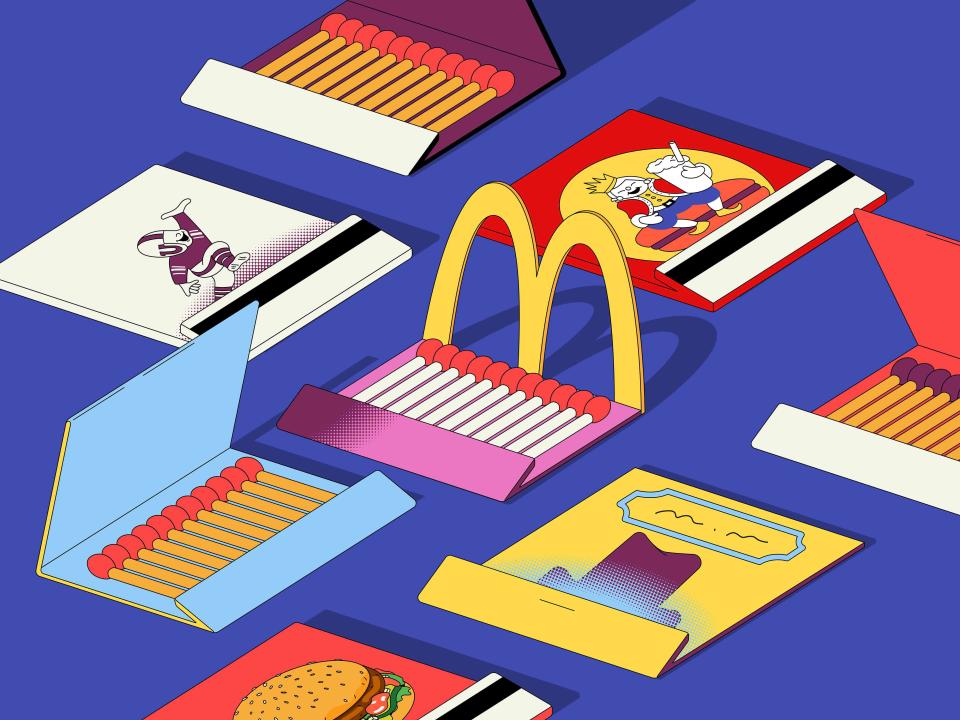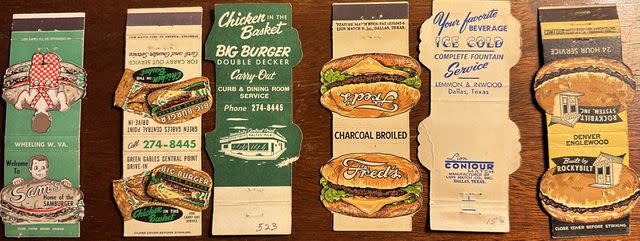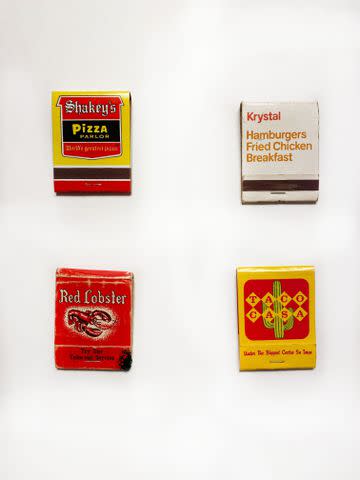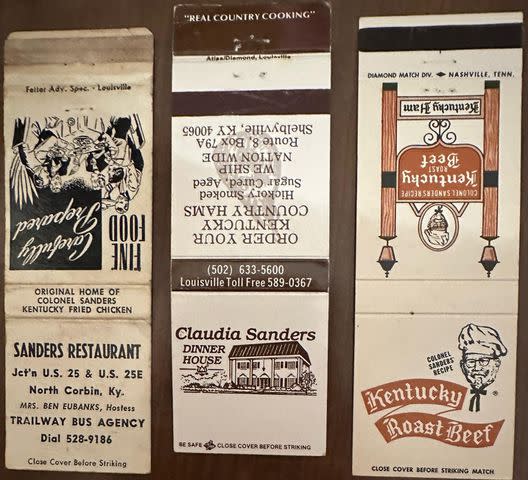McMatches: The Hot Hospitality of Vintage Fast Food Matchbooks
Those little pieces of promotional cardboard may not be around any more, but they sure are collectible.

Allrecipes/Jiaqi Wang
There was a time, not too long ago, when just about every business produced matchbooks. Politicians handed them out on their campaigns, funeral homes had them by the front door, and drug stores would hand you a pack with your prescription. You could pick up a matchbook at the Safeway while grabbing a carton of milk, and you’d wrap up dinner at the local steakhouse by grabbing a fresh pack of branded matches on the way out the front door.
You could even grab a pack of matches at your favorite fast food haunt, from McDonald’s to Bob’s Big Boy, with books from Wendy’s advertising its “rich and meaty chili” and “Frosty dairy dessert” and books from Arby’s inviting patrons to “break the hamburger habit.” Inside a McDonald’s book, the actual matches would often be printed with a drawing of a Big Mac, and on vintage Burger King books, you might see a childlike king perched, with a milkshake, on top of a comically largeWhopper.

Courtesy of Rich Greene
Before the ‘80s and ‘90s, when matchbooks began disappearing from reception desks and hotel lobbies thanks to the prevalence of disposable lighters and the rise of smoking bans, the cardboard curiosities were a near ubiquitous piece of marketing merch. “It was a basic form of hospitality, like ‘I give you the gift of ready, convenient fire,’” says Rich Greene, matchbook collector and chair of the publicity committee for the Rathkamp Matchcover Society. At a time when a large portion of the U.S. population smoked, matches were a de facto necessity—and an item that brands could slap their logo on and produce rather cheaply.
“Matches were a logical advertising premium for any and every business,” says Greene. “You were getting your brand and your logo out there in the marketplace so that people, subliminally, would associate their desire or need for something with the logo that they saw. People would think, ‘What cereal am I going to buy? What soap? And at what supermarket?’ And bingo, it would be there in their brain. They didn’t know why, but they’d seen the logo, so it must be good.”

Courtesy of Corey Williams
Beyond that, Greene says, brands liked matches because they were portable, easy to pick up, and tended to be passed from person to person. “Everyone likes to get something for free,” he says. “The old adage is, ‘If it’s free, I’ll take three.’ Even if you didn’t smoke, you’d take a pack anyway from wherever because it was a souvenir. And if you weren’t a smoker, you’d either give that pack to a smoker or you’d use it to light a candle or the BBQ, or even use the corner of the pack to pick your teeth.”
These days, seeing the McDonald’s golden arches is almost a given if you’re leaving your house, scrolling social media, or watching commercials. In the middle of the 20th century, though, when the brand was just getting rolling—or when companies like Wendy’s and Burger King were just starting to compete—it made complete sense that companies would want to subtly remind patrons of their delicious french fries and always-hot coffee. Consumers might not forget McDonald’s existed, but keeping that brand top of mind—or maintaining a good “share of mind,” in ad parlance—was something companies actively pursued.
While the fast food chains no longer produce matches—ceding that practice to other, fancier restaurants—the covers and books still have value among match collectors, a good number of whom keep at least a few fast food classics in their collection. Some collectors prefer to focus on earlier, less common eateries, like automats and lunch wagons, and there’s a whole subsect of enthusiasts who collect books shilling for Big Boy eateries, but Greene says that collectors who keep fast food covers do so out of a sense of nostalgia, since they’re actually not worth very much. “Most fast food matches are on the low end of the market, going for anywhere from pennies up to $1,” he says. (There are exceptions, of course, like books that advertise Colonel Sanders’ first restaurant or “contour” books with matches in the shape of a burger.)

Courtesy of Rich Greene
“We all carry a hunter-gatherer gene, and collectors collect because, ever since man started stacking rocks in his cave, there’s been a certain aspect of the process that’s just biologically inherent,” Greene explains. “Someone might collect fast food matches because the book features the town they grew up in, or ‘That's where I had my first date. That's where my first job was, slinging sandwiches at that Arby's.’ There’s a certain psychological satisfaction that you get from putting things together in a group, too. It’s why I put all my chain restaurant matches together in one album.
We all just want to make order out of chaos, Greene says, and that chaos isn’t limited to just what’s prestigious or rare. Collecting McDonald’s matchcovers or keeping a binder full of covers advertising Shakey’s or Pizza Hut helps us preserve not just our own history—a catalog of memories and moments spent in those locations—but also the history of our culture, with all of its peaks, valleys, and hot, delicious french fries.
Read the original article on All Recipes.

